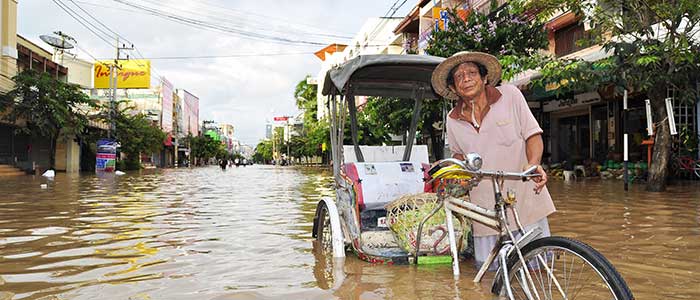Speaking at the launch of a UNDP report yesterday, Magdy Martínez-Solimán, UNDP assistant administrator and director of the Bureau for Policy and Programme Support, stressed that shocks are part of development and need to be incorporated into strategies.
“Development is not linear,” he said. “It is a complex process that involves both progress and crisis. Drought and famine in west Africa, cyclones across Southeast Asia, insecurity and migration, the collapse in oil prices; these are not somehow extraneous to development, they are part and parcel of it.
“All countries have to ensure their development is informed by the risks such events pose. If we fail to understand this intimate relationship, and fail to adequately finance in light of this, we will not deliver on sustainable development.”
He stressed that investments in risk and resilience are desperately needed, as the world becomes increasingly volatile and the cost of aid continues to rise.
Just $13.5bn of the $3tn spent on development aid over the last two decades was spent on ensuring development was protected from disasters, he highlighted.
“Many of the same countries that feature on yearly humanitarian aid appeals are the same countries that featured 10, sometimes 20 years ago. We have not seen enough investment in transition out of conflict or recovery from disaster.”
He stressed that the world needs to question how many of its investments are “truly ‘priced for risk’”, and consider whether the trillions of dollars set to be invested in infrastructure up until 2030 could actually increase, rather than reduce risks.
Martínez-Solimán’s comments were in line with the conclusions of a report from the UNDP and Swiss development agency, published earlier this year but launched yesterday.
The report argued that financing for risk must go beyond official aid flows and domestic public finance. It must cover all future investments and avoiding locking-in or introducing risks.
All financing, it stressed, including public, private, domestic and international, should work directly to manage risk and build resilience, otherwise the cost of inaction will only grow.
This might involve, for example, financing that can be delivered faster once a shock arises, or the provision of longer-term finance to support transitions out of crises. Also, higher upfront or maintenance costs might be the implication of ensuring that infrastructure is resilient to natural hazards.
Official aid flows should target those countries most vulnerable to risks, found the report, while private sector funds will also be critical to “risk-informed development” and barriers to it should be removed.
In most cases, combining multiple sources of financial instruments, such as insurance, catastrophe bonds, social protection programmes and cash transfers will be necessary, it adds.
“The focus now should be on the practical steps decision-makers can take to embed risk and resilience into development planning,” said Martínez-Solimán. “Issues and potential solutions outlined in this report should become part and parcel of the ways in which countries and communities invest in sustainable development.
“Without such investments, they risk failing to deliver development at all.”













